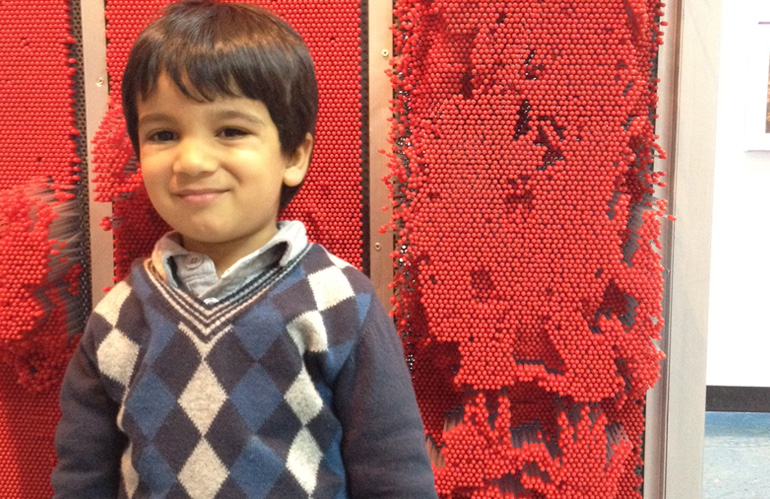


Exploring the science of color (chromatics) through various media and foundation concepts of visual art, color, line, form, texture and composition by presenting traditional media in innovative ways. Color categories and physical specifications of color are also associated with objects or materials based on their physical properties such as light absorption, reflection, or emission spectra.
Children use their hands, arms and other objects to create colorful impressions on this interactive multi-sensory exhibit. It combines movement and creativity to enhance brain stimulation and contour gauge.
Slide the backlit panels in each row over each other to reveal new textures, patterns, shades and colors that emerge. It teaches the child the concept of how colors and patterns mix and form other colors and patterns.
Chimes are a member of the percussion family and can be used to explain Pythagora’s Theory of Sound. Striking the top edge of the lower end of the tube of various lengths, gives rise to low notes and high notes.
Replicate on a magnetic board famous works of Great Masters that involve shape sequencing and sorting using a colorful array of engaging patterning puzzles. This exhibit develops a child’s ability to capture visuals and recreate them through trial and error.
This explains the concept of vibrating waves producing sound. This is explained by dropping various sizes of washers over a threaded screw to produce sound waves.
Children create designs on glass using paint as the medium to express their creativity through individual or collaborative effort.
These activity stations ensure a variety of experiences like clay sculpture, spin art, rubbing plates and puppet making. Children work individually or in groups to sculpt, model and create. Improves fine motor and sensory skills.
This area is a place where kids and their families can design and experiment with various educational concepts. Multidisciplinary experiences and exhibits inspire innovation and creativity to support current classroom curricula.